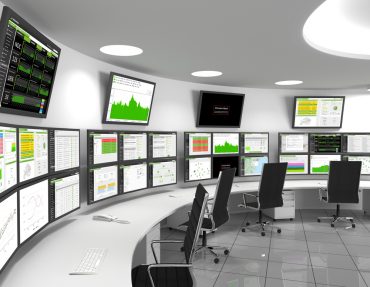
The increased adoption of microgrids across the industry could result in driving the agriculture economy, improving food security in areas that have traditionally been lacking, and increasing resiliency in the supply chain.
Each year, increasingly high energy demands result from continued climate change. And with the Biden administration teetering on calling a climate emergency, it is paramount for industry leaders to take a collective approach to improving carbon emissions through alternative technology to make progress toward net zero goals. Industries leveraging alternative energy solutions, such as those based on microgrids, that benefit both operational and sustainability goals are taking a foot in the right direction.
The landscape of the agriculture and food processing industries becomes increasingly threatened by supply chain issues, cybersecurity threats, and unpredictable weather conditions. As they share a critical dependence on electricity and electric reliability, industry leaders are looking for a resilient power solution to ensure their carefully orchestrated operations remain profitable and avoid excess product waste and other costly operational challenges. To do so, the industry needs an alternate but reliable energy solution that has the added benefits of improving operations and sustainability.
Specifically, microgrids could be a useful tool for the next generation of agricultural technology by increasing resiliency, cutting costs, and reducing businesses’ carbon footprints. Onsite microgrids act as an alternate energy solution that enables businesses to manage energy costs while enhancing sustainability and operational resilience. When the grid goes down, microgrids can keep critical operations running so that harvests are spared.
See also: How Microgrids Tackle the AC/DC Challenge of Alternative Energy
What is a microgrid?
Microgrid solutions combine battery and solar energy to store excess power and use smart software to avoid blackouts in case of an emergency. A microgrid is a local energy grid with control capability, meaning it can disconnect from the traditional grid and operate autonomously. If used appropriately, the agriculture industry can drive innovation while cutting costs and emissions.
As seen recently in Texas and London, energy grids are failing across the globe due to their incompatibility with extreme weather conditions. When the main grid goes down for hours or even days, microgrids can keep critical operations running. Microgrids can eliminate grid failure in agriculturally rich areas faced with rising temperatures and provide power in case of blackouts, reducing spoilage and keeping production up and running.
This summer, cities across the globe are suffering the repercussions of climate change from heat waves that have caused detrimental grid damage, and industry leaders have found it a challenge to find resilient energy sources that will remain intact with the increasing intensity of different weather seasons.
Saving the supply chain and the environment
A reoccurring theme and important factor in agriculture and farming moving forward is developing environmentally friendlier operations. It is not uncommon for agricultural businesses to have decarbonization targets or established ESG goals related to sustainability. There are technologies that exist today to develop microgrids specifically designed to solve the energy needs of agricultural operations, food processors, and others operating in the food supply chain.
Businesses like Bowery Farms have adopted microgrids and, in doing so, reduced their water usage by upwards of 95% and eliminated their carbon footprint via microgrid solutions. Using electricity from microgrid generation resources, like solar power, results in decreased emissions to power operations compared to power from the grid. In addition to the carbon benefits, microgrids can also prevent harvests kept in cold storage from spoiling, sparing canners for cleaning, avoiding resetting entire production lines to avert safety issues from food caught in equipment, and reduce excess waste.
Farmers and food processors across all regions must maintain operations in case of a grid overload to save food and water and maintain the supply chain. Energy grid overload is nearly inevitable during the warmer summer months. By having backup energy stored, Microgrids can help farmers/ food processors avoid costly downtime. As an alternative energy source, Microgrids make operations more resilient through increased reliability and improve sustainability by lowering greenhouse gas emissions.
Cost-effective power source
Microgrids as a power source to agriculture technology and systems can lower costs and enhance operations around electric fences, egg incubation, livestock facility ventilation, security, and lighting with cost-effective electrification serves as a path to reducing growing energy needs.
If a business chooses a microgrid as an alternate power source, it can lead to lower total costs of electricity over the system’s lifetime compared to buying power from the grid. By installing a microgrid, a business can save money by reallocating costs that would normally pay from power generated by the outside energy grid.
Microgrids can both generate and store power helping organizations that leverage microgrids avoid downtime that competitors may face in the wake of a climate emergency or grid failure. Eliminating product losses and production shutdowns help cut costs and increase overall financial gain.
Boosting operations
For agricultural businesses, microgrids can unlock opportunities to improve and expand operations in ways that are untapped. By investing in energizing and automating processes to the same extent, food processors have, agriculture operators can decrease onsite energy through microgrids and make operational improvements making these processes more economical.
Having a microgrid onsite can handle electrified solutions to reduce emissions on traditionally gas-powered transportation. It can also handle onsite heating needs within the grounds. Microgrids can diversify and increase overall agricultural production by enabling the development of advancements in technology and processes. Converting to microgrid energy can help businesses adopt automatic processes for what has been traditionally manual, which should help reduce friction overall.
The need for energy isn’t going anywhere. Microgrids have the potential to resolve many issues that are sure to arise across the agriculture industry as environmental issues and climate change continue to put pressure on industries, business owners, and individuals across the globe. With alternative energy solutions, like microgrids, agriculture leaders and food processors have a ready solution that could boost operations, cut costs, and limit emissions. Looking down the road, microgrids could ensure reliability for the agriculture industry as forward thinkers develop technology to sustain the future of the food industry. The increased adoption of microgrids across the industry could result in driving the agriculture economy, improving food security in areas that have traditionally been lacking, and increasing resiliency in the supply chain.






























